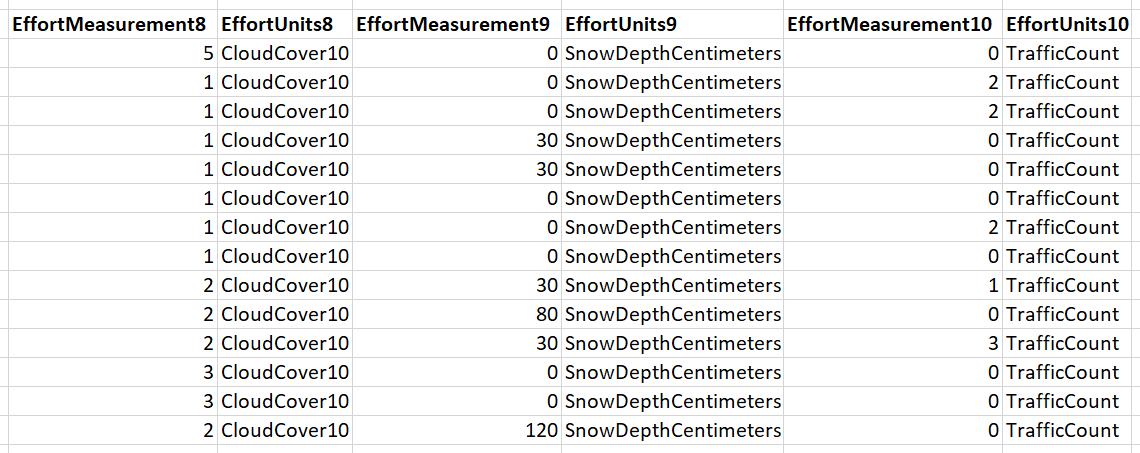There are a number of fields in the BMDE that record effort. Many are intuitive, such as Collector (the name of the collector/observer) and TimeObservationStarted. Of particular importance is DurationInHours, which indicates the total duration of the sampling event associated with the record’s sampling event identifier. DurationInHours is normally provided in decimal hours, so a 90 minute duration would be represented as 1.5 hours.
The EffortMeasurement and EffortUnits fields are flexible fields used for recording various types of effort-related information, or in some cases information that is not strictly effort, but may influence data collection. Both the core and extended versions of BMDE 2.0 have 18 of each, allowing them to capture many different effort-related variables. The fields are numbered, and an EffortMeasurement field always has a corresponding EffortUnits field, for example EffortMeasurement3 and EffortUnits3.

Photo by Laura Achenbach
An EffortMeasurement field contains a value, and the corresponding EffortUnits field provides the units of measurement that pertain to that value. For example, EffortUnits3 may contain “TemperatureCelsius”, indicating that the number in EffortMeasurement3 is a measurement of the temperature in degrees Celsius at the time of the observation.
Each project may use these fields differently, so it is not safe to assume that EffortMeasurement3 in one project contains the same variable or type of information as it does in another. Some closely related projects may coordinate to use these fields consistently, for example Canadian Migration Monitoring Network stations. Information recorded in these fields may include variables such as survey distance, time, party-hours, weather conditions, environmental conditions (e.g. traffic, noise), and others.
The sample of BMDE data below shows the paired Effort fields being used to collect weather and traffic data.

In some cases, EffortMeasurement fields use a numerical value to indicate a qualitative or categorical variable. For example, if an EffortUnits field contains “Precipitation”, the corresponding EffortMeasurement field may contain numbers which are assigned to precipitation types such as rain or snow.
If you require clarification on the data contained within the Effort fields for a given project, you should reference the ProtocolReference and ProtocolURL fields (if populated) or the project’s metadata.
Next section: Observation Fields













